Products
Functional storage makes your everyday life easier. Elfa has different product lines adapted to different storage needs.


Is your wardrobe overflowing and stuffed full of clothes you never wear? We all know that feeling of “nothing to wear”, which often leads to unnecessary impulsive buying. It is also important to think long-term and choose quality rather than quantity when it comes to clothes and how you store them. You can see what you have at a glance with a storage system for hanging clothes rather than storing them in drawers. To keep your wardrobe well organised and clothes neatly arranged, it is important to have a smart clothes storage system.
Here are some smart tips for planning a practical wardrobe that will allow you to maximise the use of space but still provide airy storage with a full view of your clothes.
Measurement and planning guides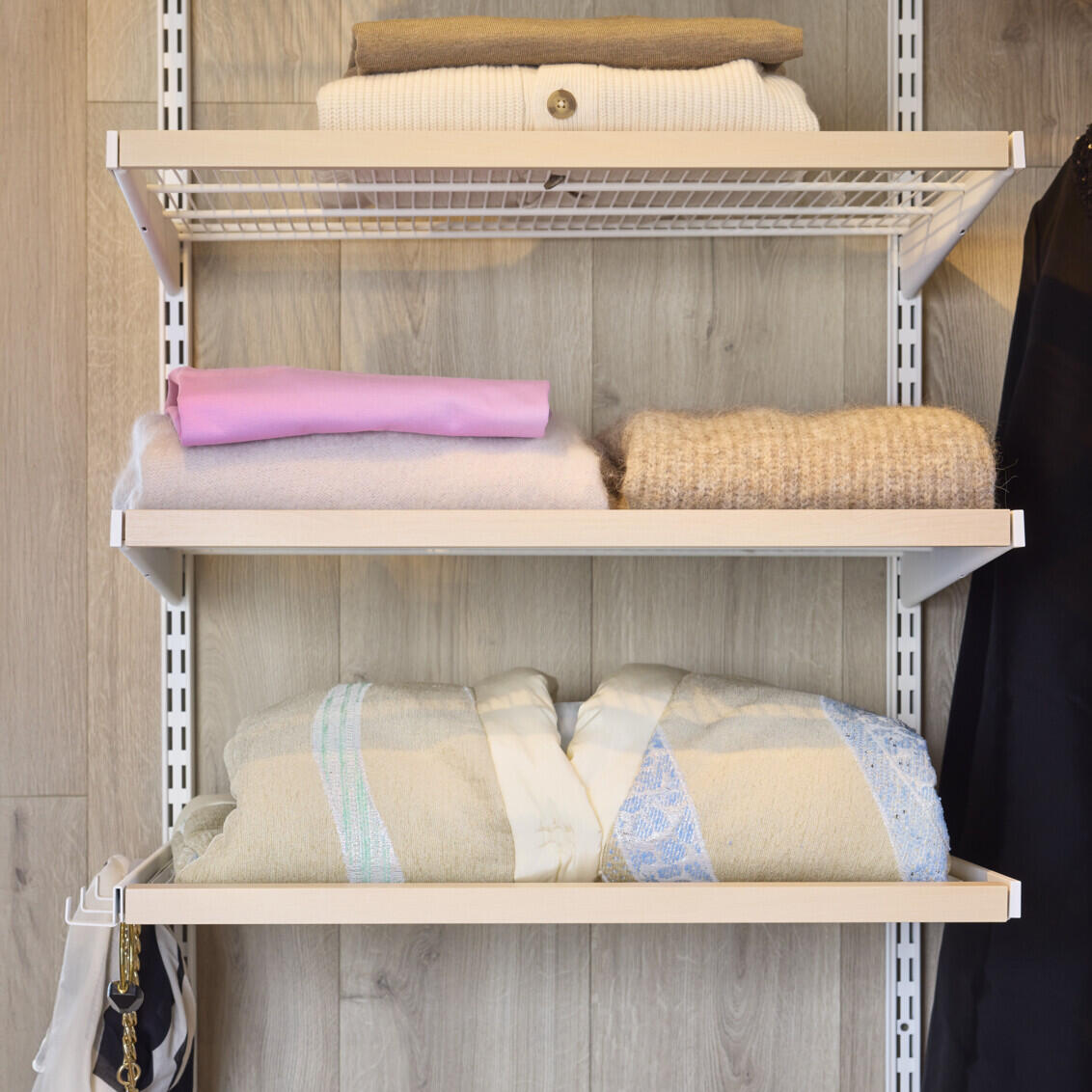

1. We recommend leaving 20-40 cm between the shelves for your folded clothes. That allows sufficient space for keeping piles of clothes neat and tidy.
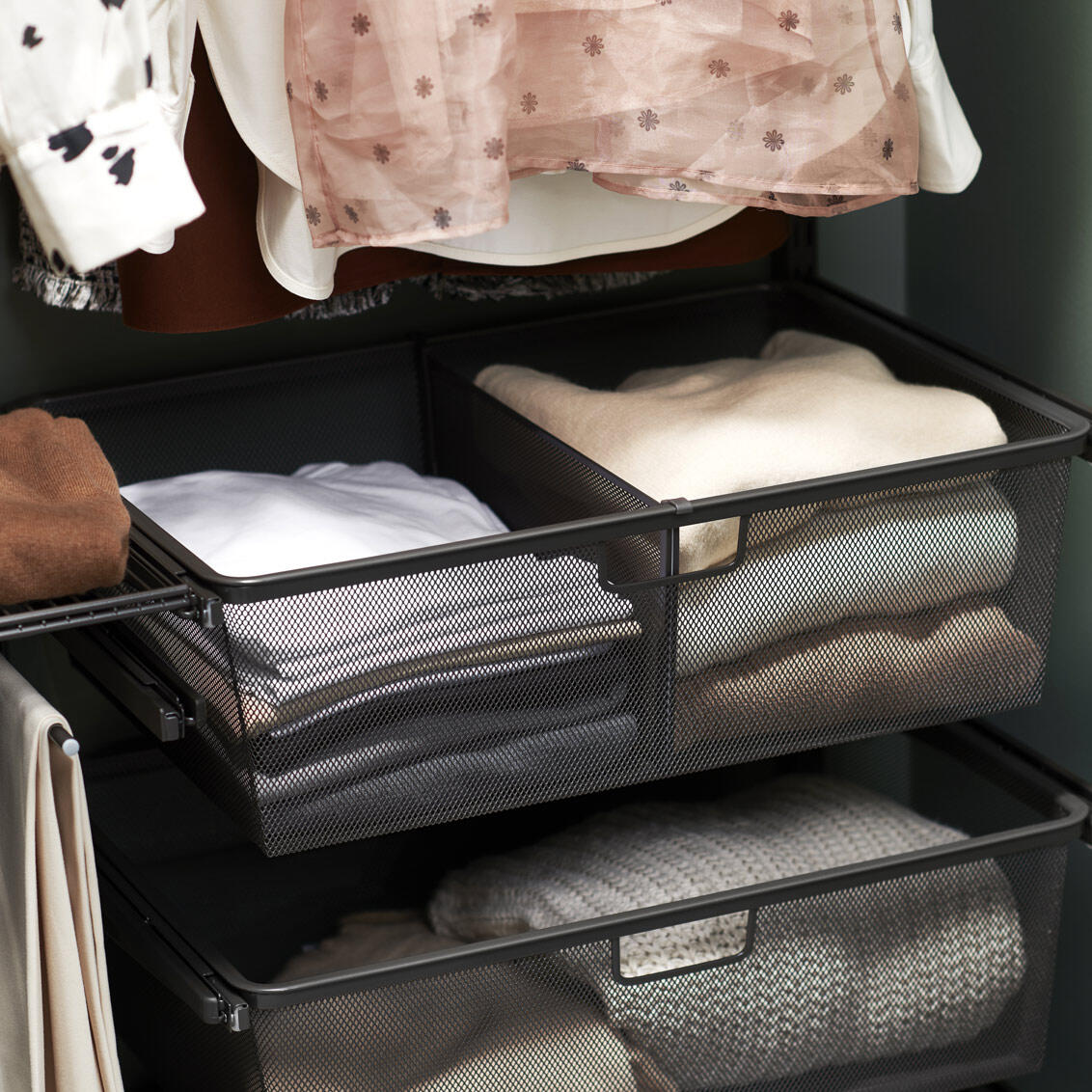

2. Knitted sweaters can lose their shape on a hanger, so use mesh drawers with dividers to keep them fresh and neatly organised.
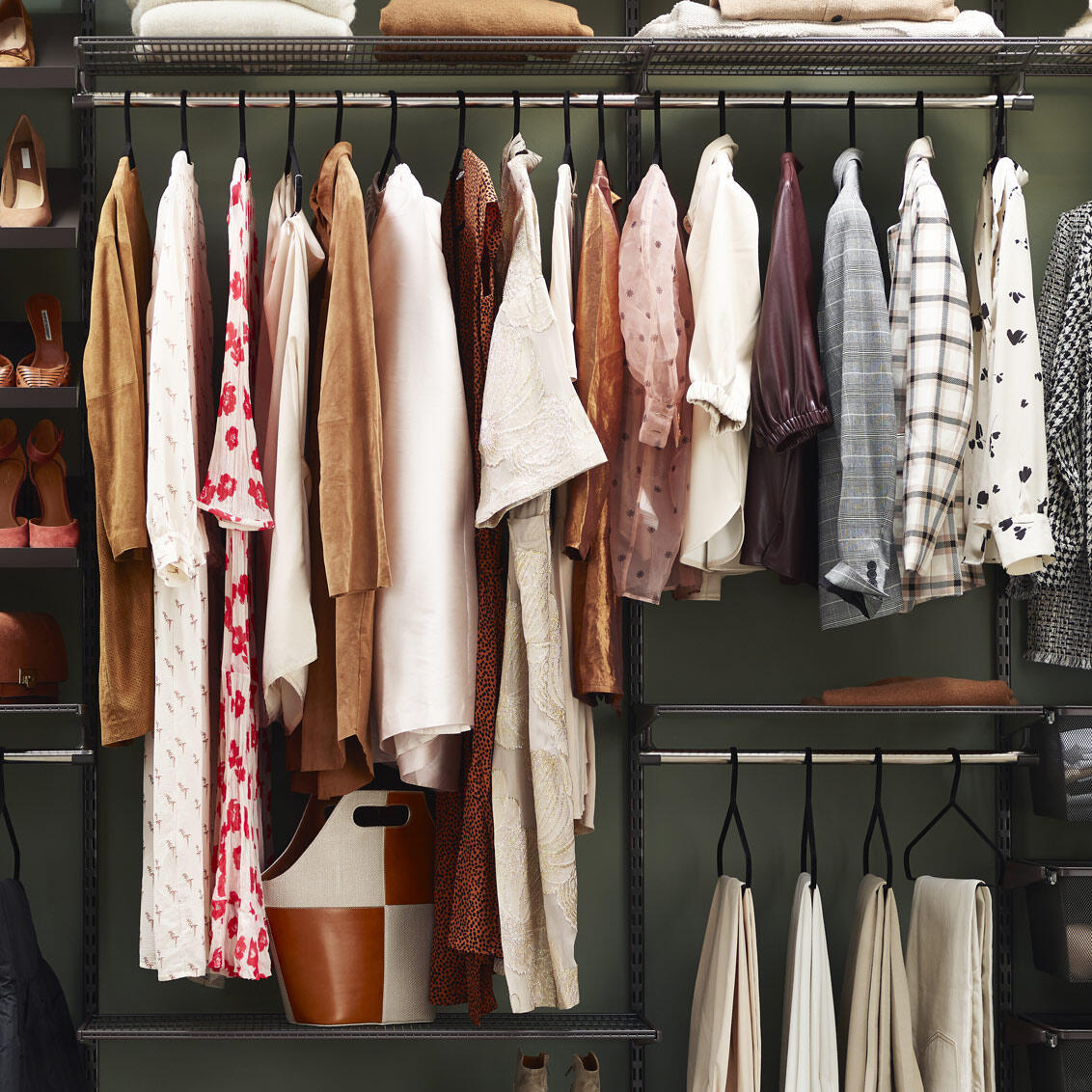

3. Plan the space so there is room to hang both long and short garments. You can hang up to 40 shirts and blouses on a 60 cm clothes rail. Men’s shirts need up to 90 cm for them to hang freely.
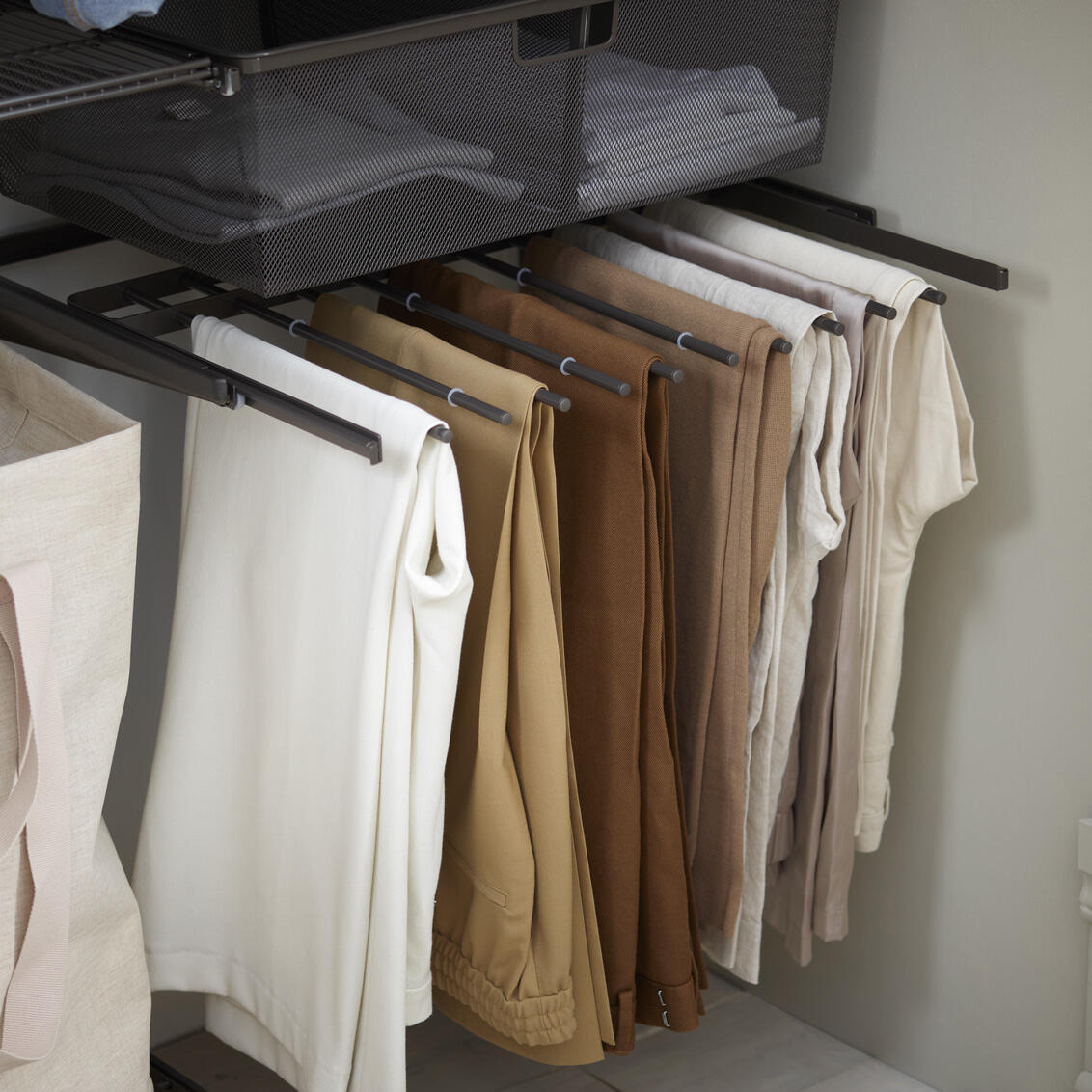

4. Trouser hangers are ideal for keeping trousers and skirts wrinkle-free. It is possible to place two pairs of trousers on each hanger. Jeans can be folded and stored in wire drawers or on shelves as they don’t wrinkle easily.
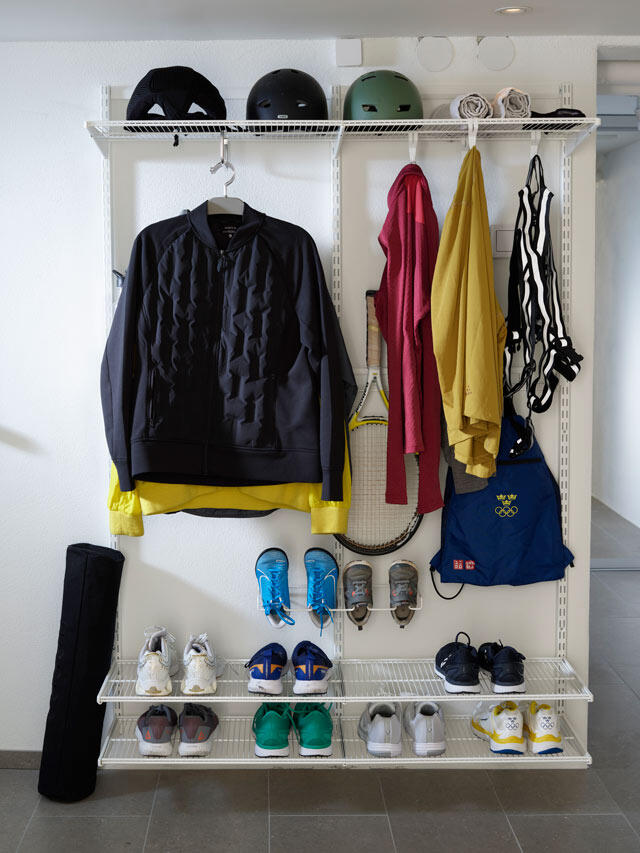

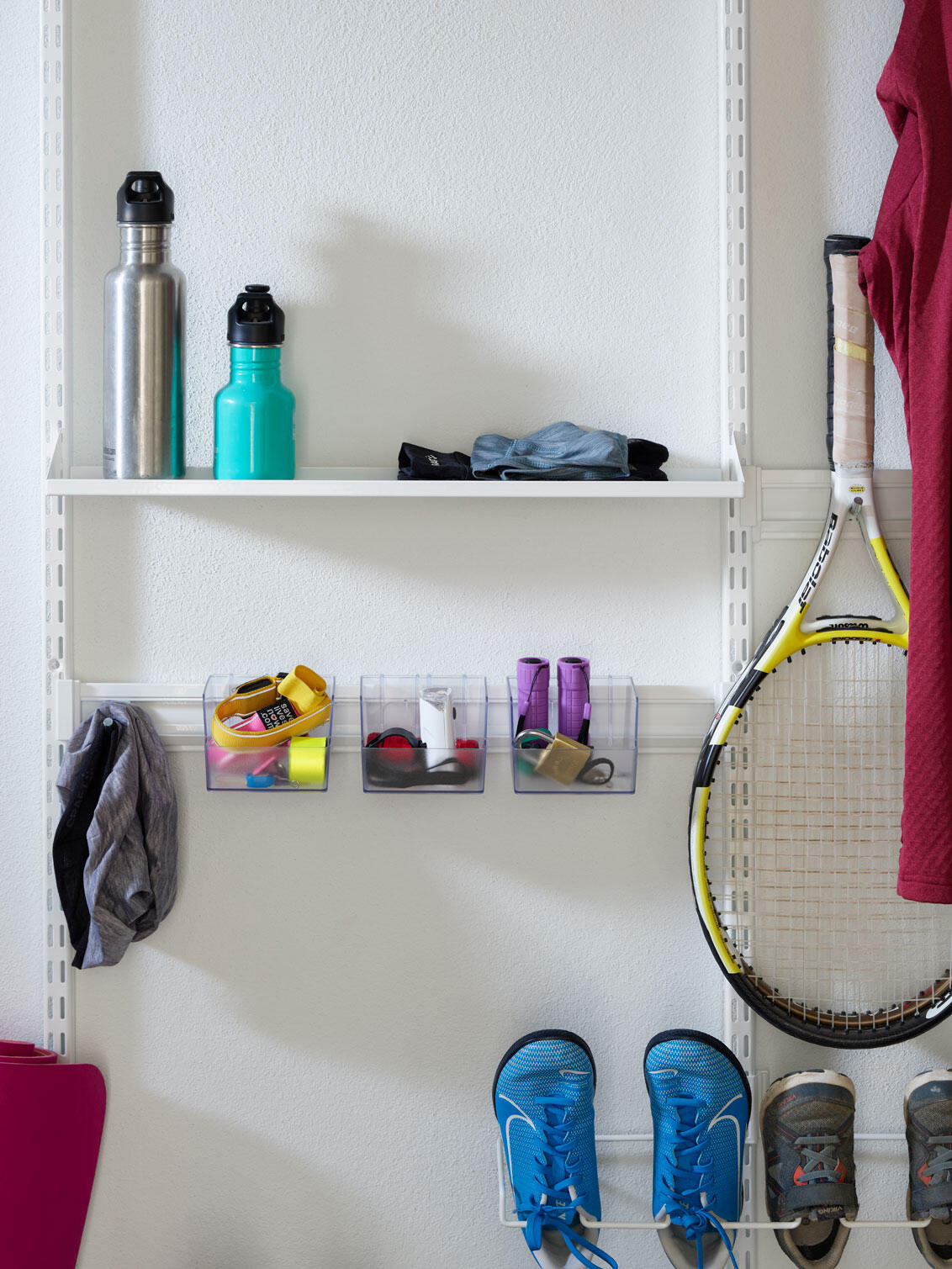

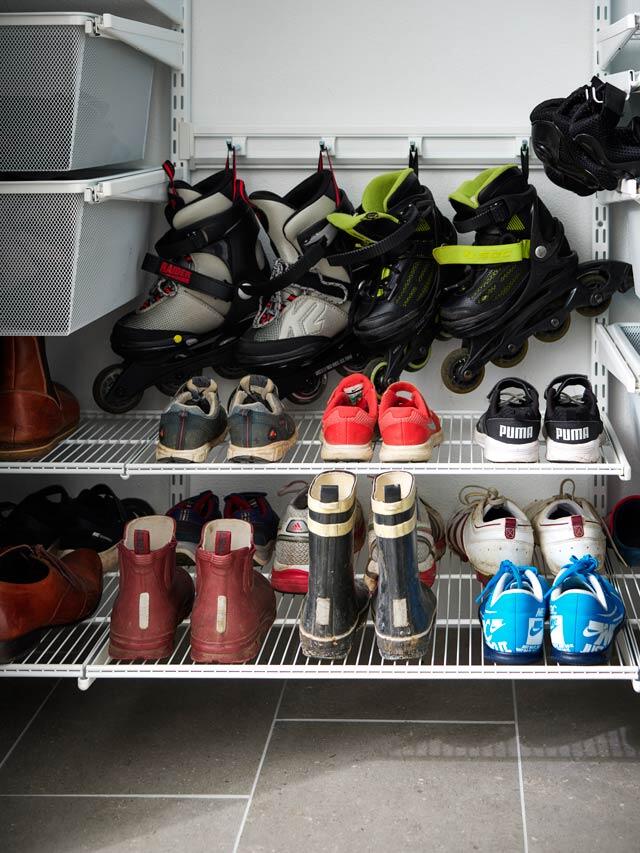





1. TAKE A BEFORE PICTURE, it’s a good idea to take a picture before you get started and bring it along with you when planning with a retailer. Furthermore, you’ll have something to compare with the before and after results.
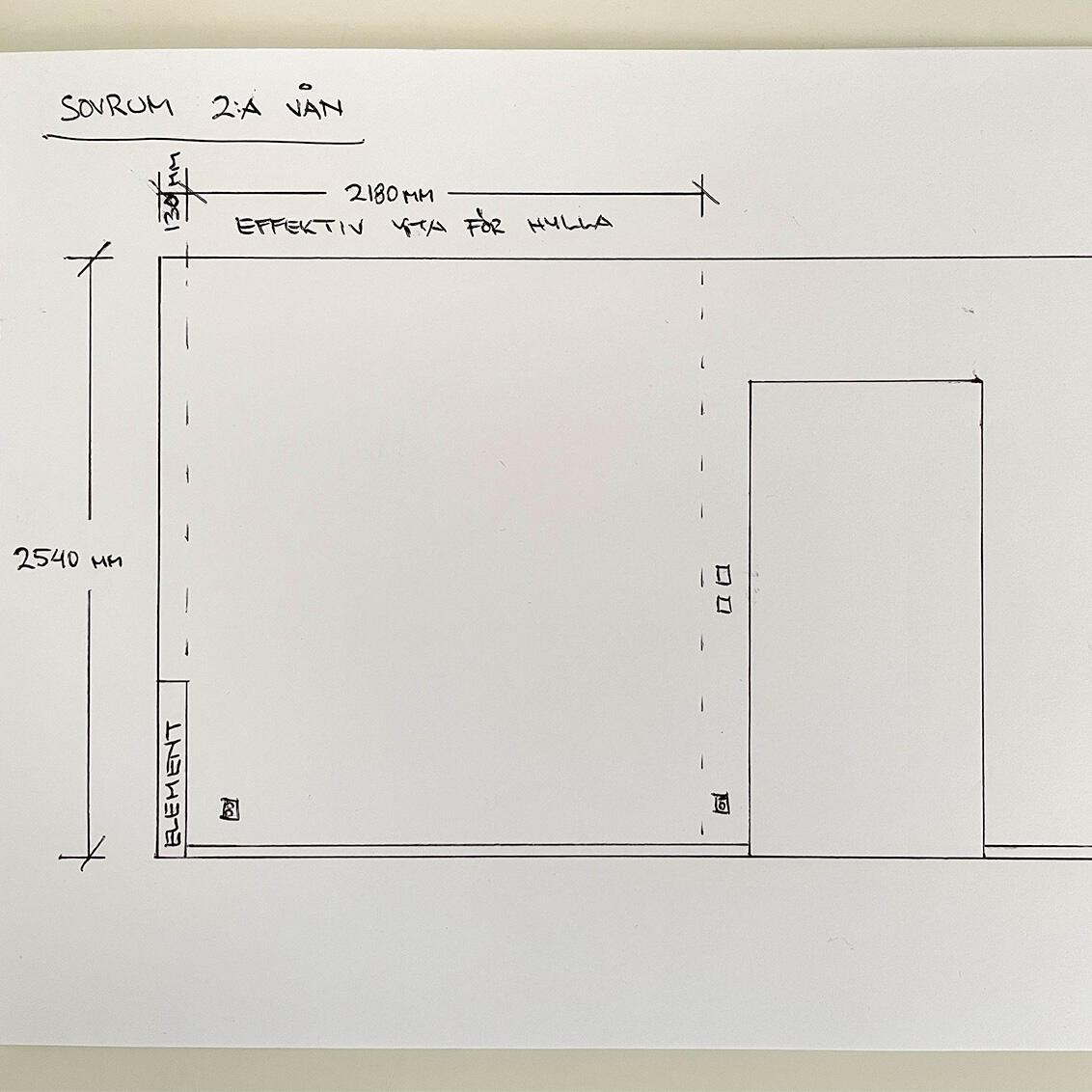

2. WRITE DOWN THE DIMENSIONS, take note of the height and width of the room and write down the measurements – remember to include all doors, window, radiators, etc. Make a sketch, too and bring that with you.
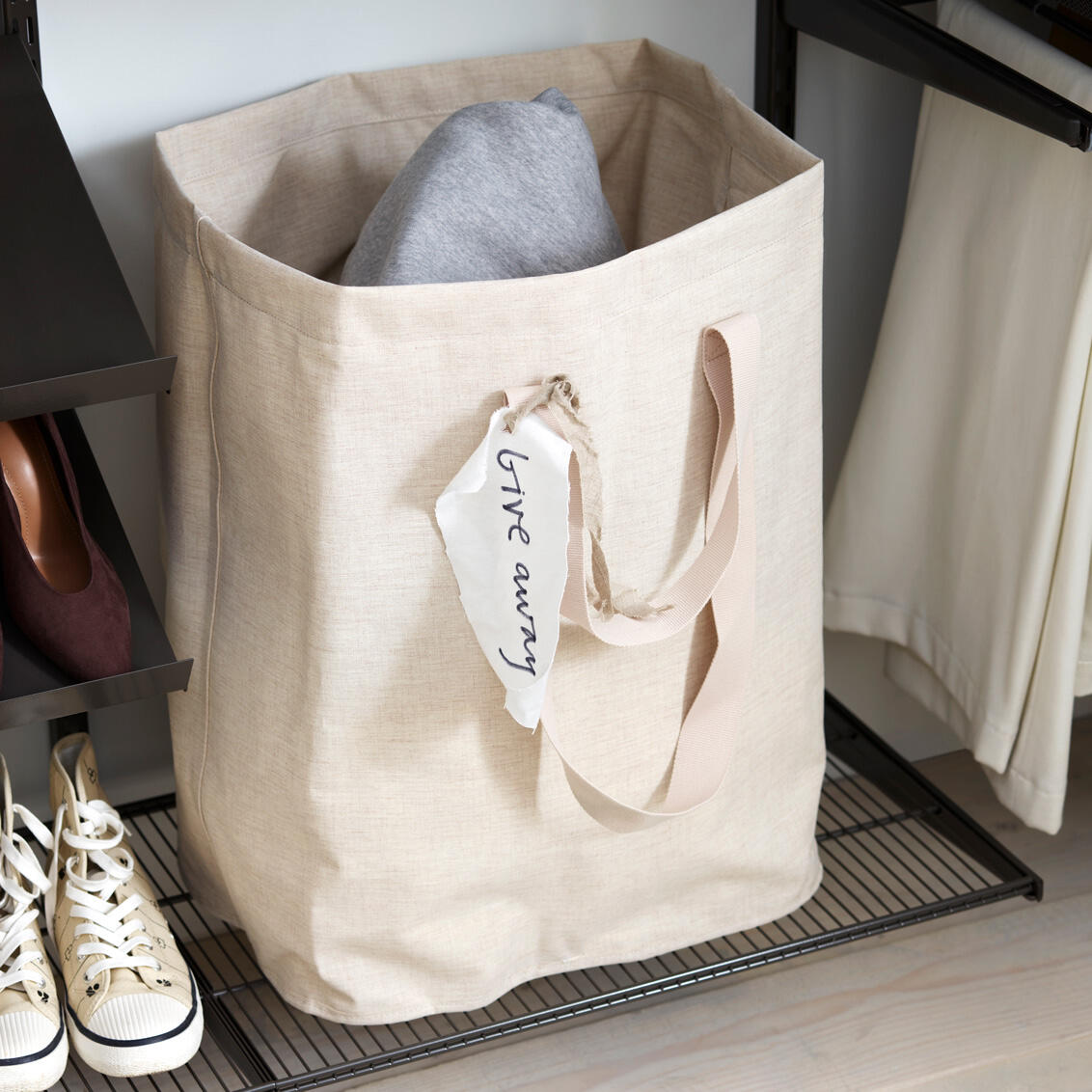

3. SORT OUT UNUSED CLOTHES, can you sell, swap with friends or donate to charity? Catalogue your clothes by taking an inventory and write down how many blouses, shirts, trousers, skirts, dresses and shoes you have. This will make planning of your storage easier.
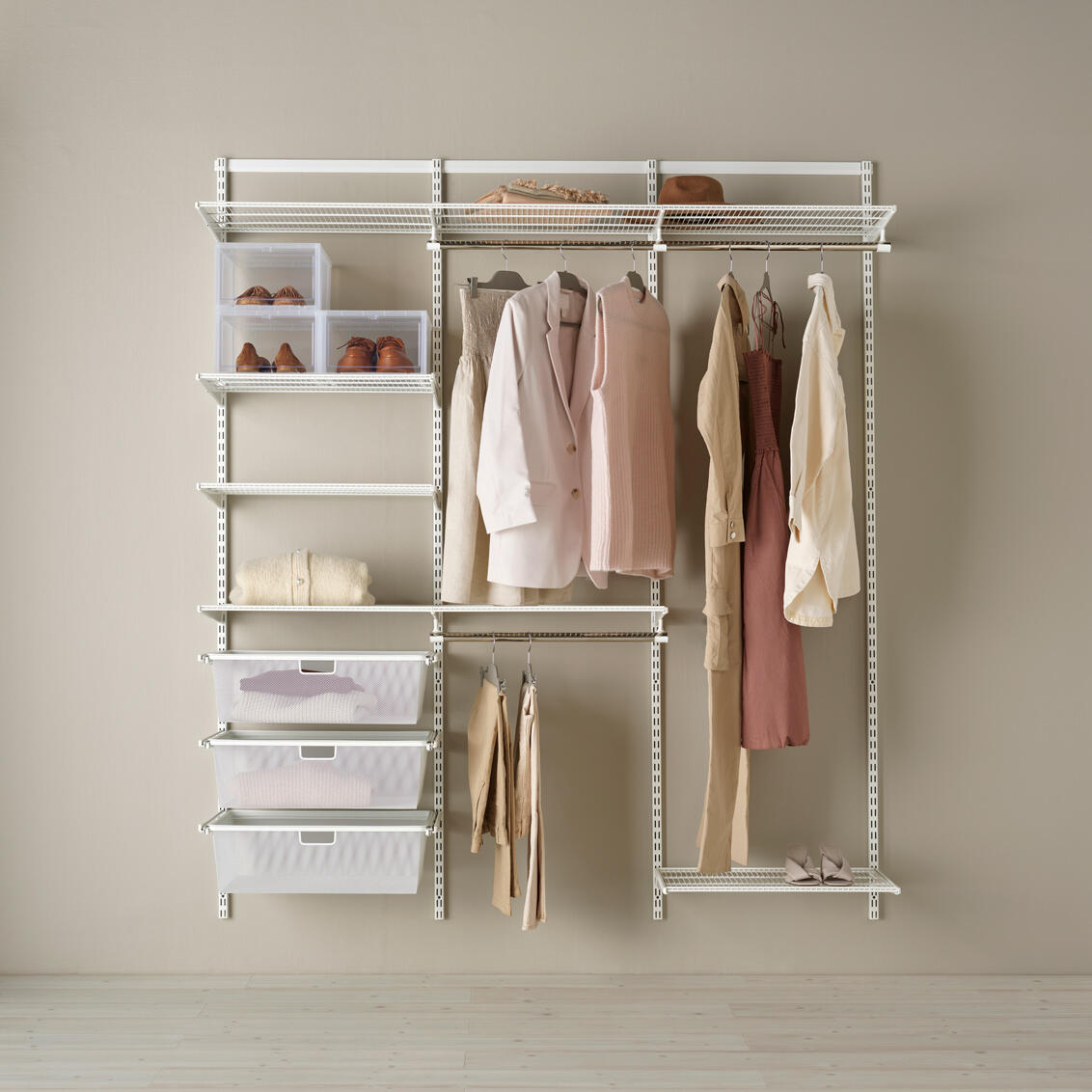

4. NOW YOU ARE READY TO PLAN! Choose from our range of ready-made solutions, design it on our online panning tool or book an appointment with your nearest Elfa dealer, who will gladly help you design your storage solution.